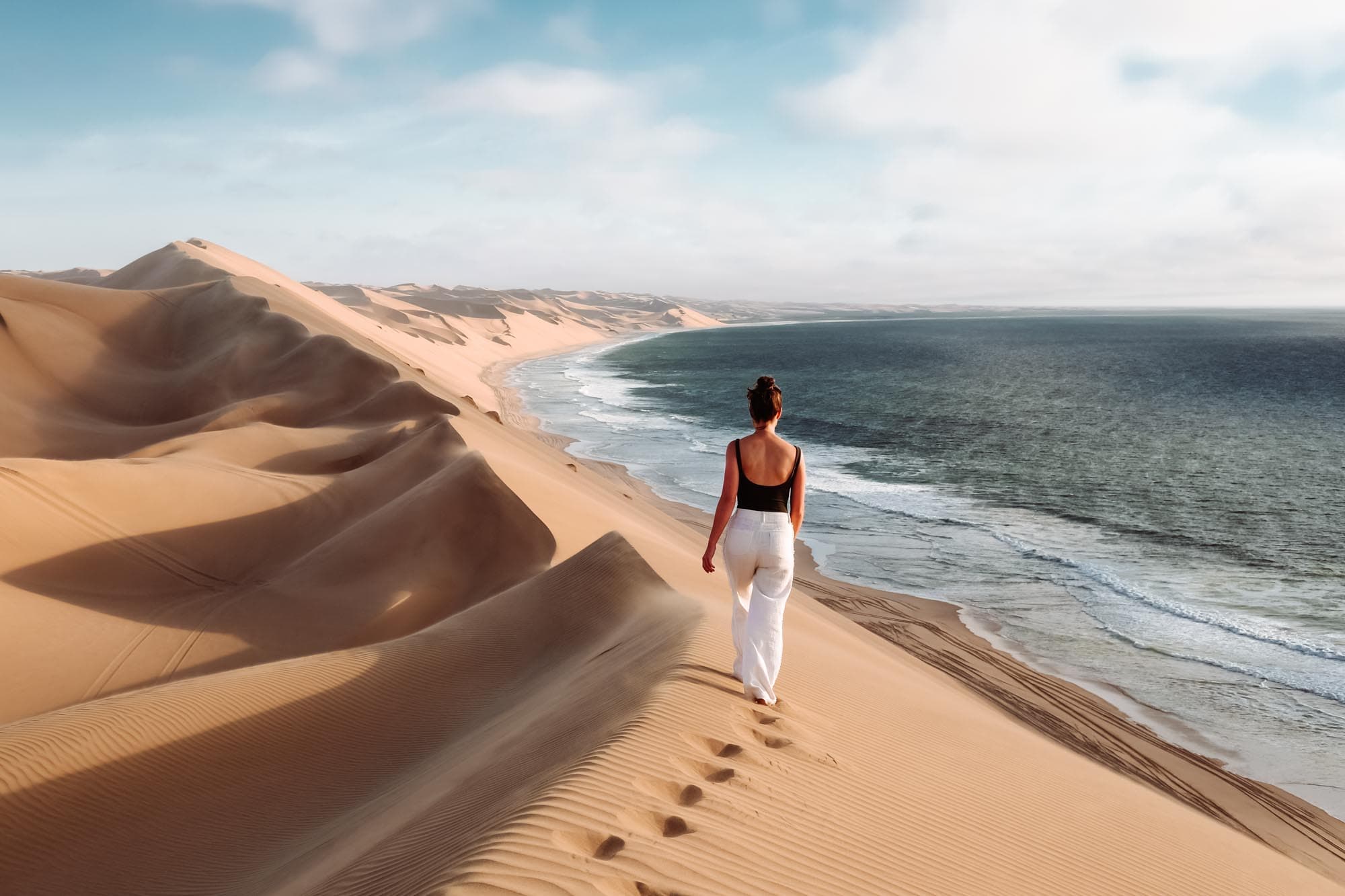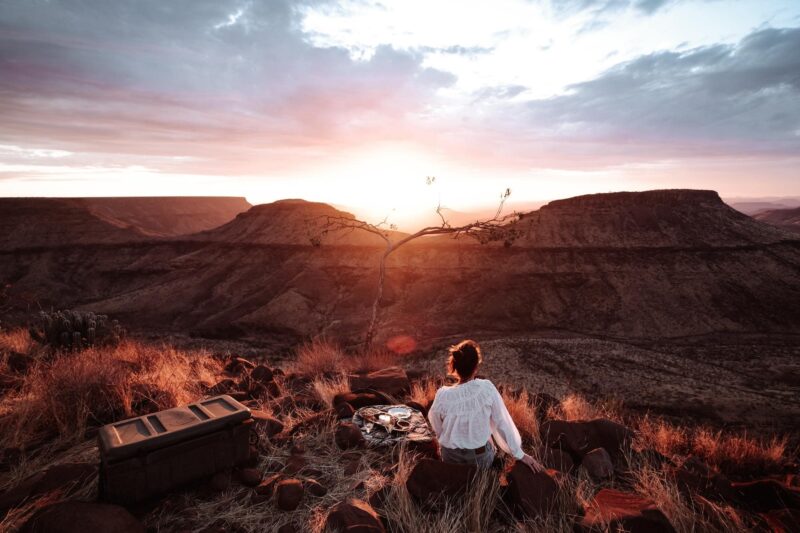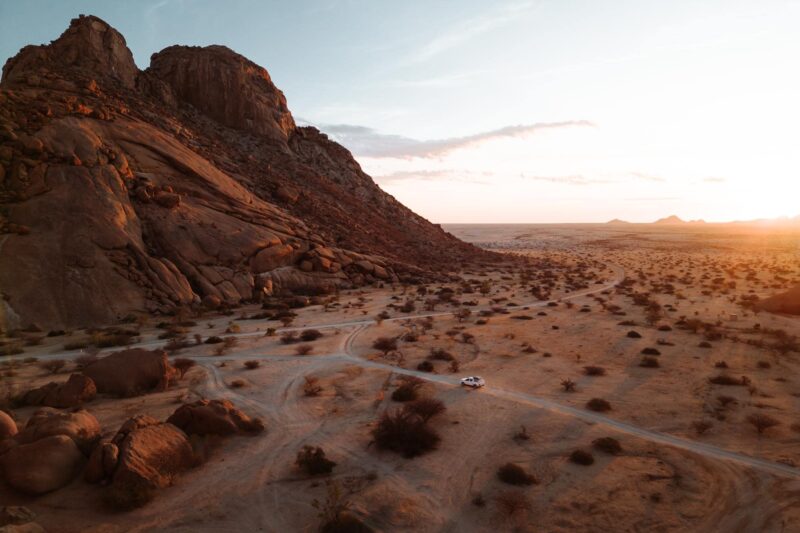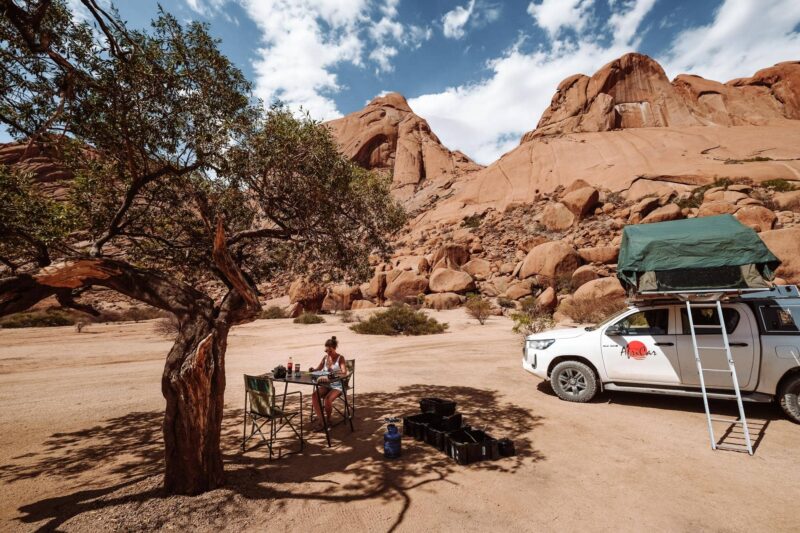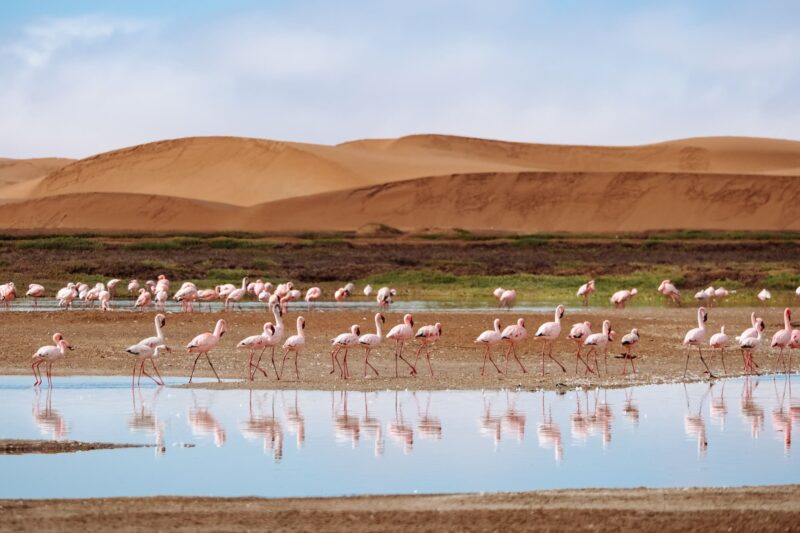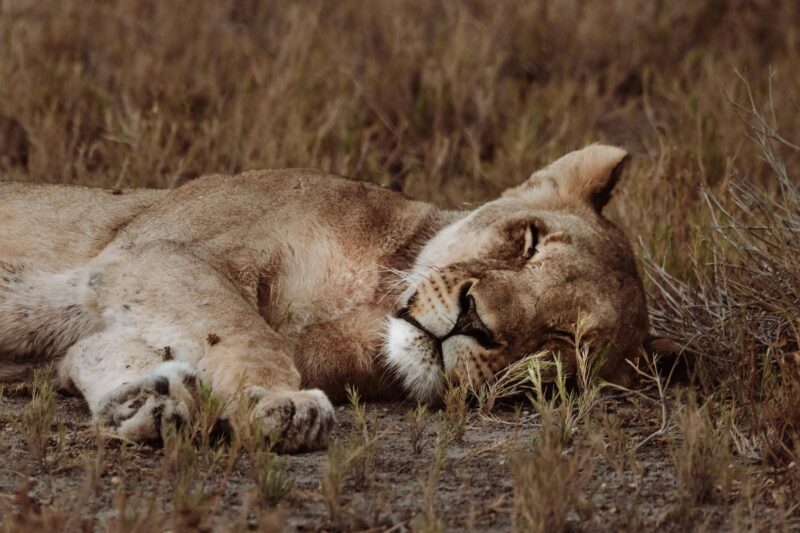Traveling through Namibia awakens all your senses. The country is perfect for an exciting road trip that allows you to see the most beautiful places in a short time. We embarked on an adventure with Namibia Nomads. With a rugged 4×4, you cruise through deserted landscapes where you occasionally encounter giraffes, zebras, or ostriches. Namibia’s landscape is mainly composed of rocks and stones, but surprisingly, each destination is completely different. From hundreds of meters high sand dunes to unique rock formations and deep canyons. In the most remote places in the country, you get to know local peoples and their traditional way of life. A trip to Namibia requires some preparation, so we have listed 11 practical tips and useful information below. With these tips, you’ll be well-prepared for your trip to Namibia!
#1 A pair of binoculars is indispensable in Namibia
Namibia is a dream destination for wildlife spotting. We spotted a wide variety of animals during our safaris, and binoculars were essential for that. In the largest natural park, Etosha National Park, you’ll find many waterholes where animals come to drink regularly. The landscape is barren, allowing you to scan the horizon with your binoculars or observe the animals up close. This makes spotting easy and even more enjoyable. One of the most affordable yet good binoculars is the National Geographic 10×50. We had a lot of fun with it.
#2 The best time to visit Namibia
In principle, you can visit Namibia all year round. The best time to visit is during the dry season, from May to October. In these months, there is little rain, and the temperatures are mild. From November to April, Namibia can get considerably hotter, with a higher chance of short, heavy rains. These rains can sometimes cause small floods, requiring you to cross rivers by car. January and February, in particular, are wet months. One significant advantage of traveling during this period is that the nature is beautifully green. We were there in November and had great weather, with only a few showers.

#3 Namibia’s climate
Namibia experiences various climates, resulting in a wide range of temperatures across the country. The majority of Namibia has a hot desert climate, characterized by extremely low rainfall and significant temperature fluctuations between day and night. During the day, the temperature in the hot desert climate can exceed 40 degrees Celsius, while it cools down significantly at night. Along the coast of the Atlantic Ocean, a cool, foggy climate prevails. Destinations like Swakopmund and Walvis Bay have average temperatures around 22 degrees Celsius. There is often mist, and a refreshing breeze blows.
Clothing tip: In addition to lightweight clothing, pack warm clothing as well. Layers are great for cold evenings and for visits to Swakopmund and Walvis Bay. Don’t forget to bring a hat or cap for the hot desert.
#4 Is traveling through Namibia safe?
Traveling through Namibia is safe. The country has a stable political situation and low crime rates compared to most other African countries. Windhoek is the only place where you should be a bit more alert, especially regarding theft. If you plan to drive a car through Namibia yourself, it’s essential to be prepared for possible car breakdowns. Namibia is one of the most sparsely populated countries globally, so you’ll traverse kilometers of empty landscapes. If you experience car trouble, it may take a long time before you receive assistance. Ensure you always have enough water in the car, and it’s helpful to watch a YouTube video on how to change a tire before your trip.
#5 Tipping is customary in Namibia
Giving tips is part of the culture in Namibia. In restaurants, you’ll typically receive a pen with the bill, allowing you to write down your tip. It’s customary to give a 10% tip. At gas stations, an attendant will fill your car’s tank and wash your windows. It’s customary to give a tip of 5 to 10 Namibian Dollars (NAD). When you go grocery shopping at a supermarket, there are always parking attendants in the parking lot who are willing to watch over your car. It’s customary to give them some small change in advance. Also, when you’ve been on a guided tour, it’s customary to give a tip of around 10%.
#6 Payment methods in Namibia
In Namibia, they use the Namibian Dollar for currency. You might not expect it, but you can use your debit card almost everywhere in Namibia. Often, even contactless payments work. However, it’s advisable to carry some cash just in case you encounter a situation where card payments are not accepted. If you’ve been to South Africa before and have some South African Rand left, bring it with you to Namibia because you can use it everywhere. This currency has the same exchange rate as the Namibian Dollar.

#7 Starting Your Journey Well in Windhoek
We have some tips to help you start your journey through Namibia on the right foot. Upon arrival at Windhoek Airport, you’ll see an MTC store. Here, you can buy a local SIM card at an affordable price, which includes some minutes, text messages, and most importantly, internet. This is especially useful for when you encounter car trouble and need to make a call, but also for various other moments when internet can be handy on the road. To withdraw local currency, it’s better to use an ATM in the city rather than at the airport since the airport charges a higher commission. LEFA is the local Uber in Namibia. Download the app in advance to quickly and safely order a taxi in Windhoek.
Restaurant recommendations in Windhoek: If you want to dine at a cozy, informal restaurant, Joe’s Beerhouse is the place to go in Windhoek. If you prefer something fancier, be sure to visit The Stellenbosch Wine Bar and Bistro. You’ll dine on a beautiful patio, enjoying delicious dishes and wines. It’s necessary to make a reservation in advance.
#8 Greetings in Namibia may differ
In Namibia, it’s customary to always greet with “Hey, how are you?” Whether you’re at the cashier in a supermarket or showing a ticket at the entrance of a tourist attraction, everyone will ask how you’re doing. Asking how someone is doing is a significant part of the greeting, and you’ll quickly find that it becomes second nature.
#9 You need a special adapter in Namibia
In Namibia, they have different types of electrical outlets, so you’ll need a type M travel plug. Keep in mind that most universal world adapters do not have a type M connection. Some hotels may have standard travel plugs available, but it’s good to have your own, just in case the hotel hasn’t considered this.
Tip: Bring a power strip with you to Namibia so you only need one type M travel plug and can charge multiple devices simultaneously.
#10 Must do: Traveling with a 4×4 and Roof Tent in Namibia
Namibia is the perfect camping destination due to its many unique campsites. You sleep in the most extraordinary places, right in the African wilderness. Just before you crawl into your tent, you’ll enjoy the clearest starry sky. As the sun rises, the sky turns beautiful shades of red and yellow, and the enjoyment starts all over again. We booked our trip with Namibia Nomads and can highly recommend it to anyone who wants to go camping in Namibia. The car, roof tent, and almost all the necessities are provided, so you can start your road trip without worries. You’ll receive a roadbook with useful tips and discover the most beautiful places in the country. Read about our experience with Namibia Nomads.


#11 This is the ultimate travel itinerary through Namibia
Namibia is indeed a perfect country to hop in a car and embark on an exciting road trip. In less than two weeks, you’ll get to experience the diversity of Namibia. You’ll drive past rugged mountain landscapes, endless deserts, and vast plains. Check out our travel itinerary for Namibia and learn all about the various destinations and highlights of this extraordinary country.
